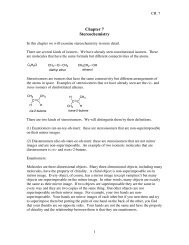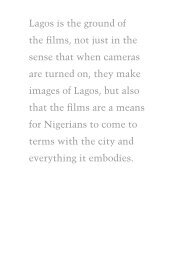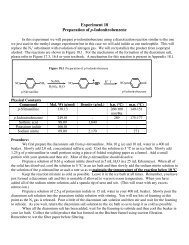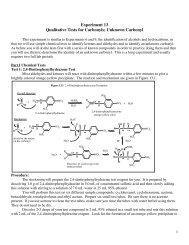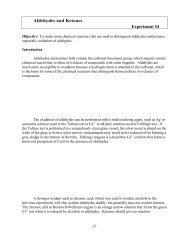Collective and Elective Ethnicity: Caste Among Urban ... - myweb
Collective and Elective Ethnicity: Caste Among Urban ... - myweb
Collective and Elective Ethnicity: Caste Among Urban ... - myweb
You also want an ePaper? Increase the reach of your titles
YUMPU automatically turns print PDFs into web optimized ePapers that Google loves.
598 Alidevelopment of a unique Hindu–Muslim syncretic culture in Hyderabad,at least at the elite level (Leonard, 1973). Today, however, this syncreticculture in Hyderabad has all but disappeared. Hindus <strong>and</strong> Muslims havebecome socially <strong>and</strong> economically estranged, as Hyderabad has become oneof the cities in India most prone to communal (i.e., Hindu–Muslim) violence(see Kakar, 1996; Varshney, 1997).Before discussing Muslim caste relations in Hyderabad, I must describethe theoretical relationship between caste <strong>and</strong> ethnicity, what I mean byMuslim caste, <strong>and</strong> its relationship to Hindu caste.CASTE AND ETHNICITY AS STATUS FORMATIONS 7Classical Hindu texts divide the Hindu population into four rankedcategories called varnas: the Brahmins, or priests; Kshatriyas, the warriors<strong>and</strong> kings; Vaishyas, the farmers <strong>and</strong> merchants; <strong>and</strong> the Sudras, the laborers<strong>and</strong> servants to the three higher caste categories. Below the Sudras is afifth category, ati-Sudras—today known as untouchables, Harijans,orDalits,as many political activists have taken to calling themselves. Dalits are notactually one caste, but a category that includes many hierarchically arrangedcastes, all of which are considered by upper castes to be ritually polluted, oruntouchable.While varna denotes the ideal-type category, people are grouped interms of actual membership into many discrete castes called jatis. Jatis numberin the thous<strong>and</strong>s across India. Some are localized, occurring in only onevillage, while other jatis are found throughout India. These are further subdividedinto (generally endogamous) marriage circles. The caste system isactually thous<strong>and</strong>s of caste systems that vary village by village across thesubcontinent. However, all these local caste systems represent closed, selfreferencing,hierarchical stratification schemes.7 The literature on Hindu caste is vast, <strong>and</strong> beyond the scope of this paper (e.g., Dirks, 1987;Dumont, 1980; Raheja, 1988). Marriott (1976, 1989; see also Marriott <strong>and</strong> Inden, 1977) arguesfor interpreting Indian culture through indigenous sociological categories, while Milner (1994)employs a Weberian analysis to examine caste as the most extreme form of status stratification.Unlike Marriott, Milner sees caste as comparable to status systems elsewhere. While there arearguments over how best to underst<strong>and</strong> the caste system, another question has been over justhow rigid this system historically has been. Cohn (1987) argues that the caste system(s) werequite fluid <strong>and</strong> that hierarchies of caste were contingent upon local conditions of rule. Thischanged under the British, who established thorough <strong>and</strong> relatively stable control, directly<strong>and</strong> indirectly, over all of India. Also, through the British-administered census, caste wasenumerated for the first time, <strong>and</strong> codified according to a Brahmanical view. Thus, in manyplaces where caste was contested, a hierarchy of castes with Brahmins as superior was imposedby the British (Dirks, 1987). For the most thorough discussion of caste, see Bayly (1999), whogives an excellent account of the development <strong>and</strong> changes in caste throughout India from theancient Vedic period to the present.




